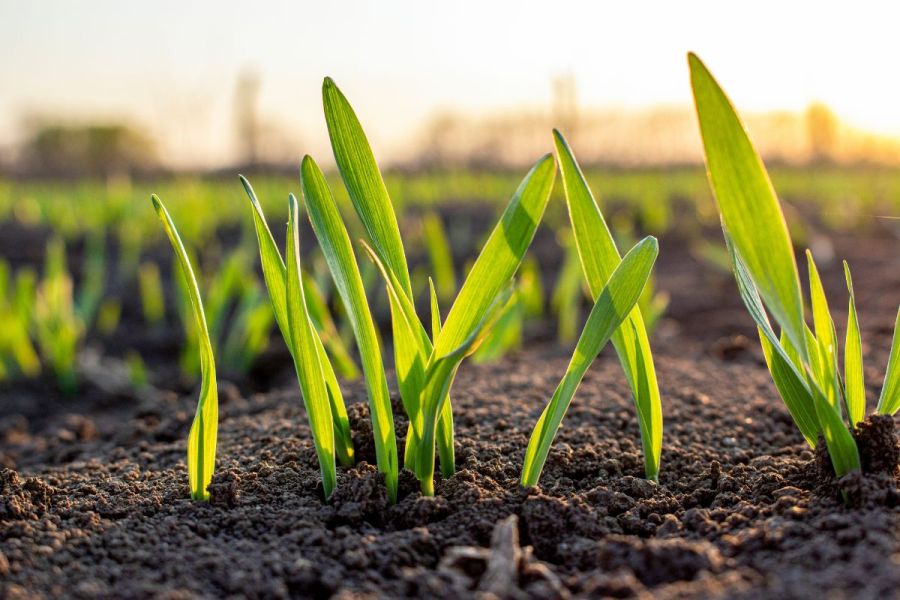What tools are available to improve understanding of soil resilience and support making effective practical changes? CPM explores if growers really can help soil to overcome adversity.
“There’s so much going on in soil that we don’t understand, it’s a complex ecosystem.”
By Janine Adamson
Soil is home to billions of organisms, big and small, many of which play an essential role in enhancing the nutrients which support plant growth. At the same time, soil is subject to a wide range of environmental changes and shocks – some of which are naturally occurring, whereas others are the result of human intervention.
Supporting soil to bounce back from these influences is critical to safeguarding the future of mankind. And just like humans and their capacity to overcome challenges, the same term can be applied to soil – resilience.
Whereas there are many elements that help to define healthy soil, what makes it resilient? Agrii’s Andrew Richards believes there are three key factors – pH, soil organic matter (SOM) and adequate drainage. “Of these, organic matter plays a vital part in enhancing both soil structure and function, so should be the main focus when it comes to building resilience. This is followed by ensuring drainage is right, especially on heavier land,” he says.
Andrew’s interest in the topic first began 10 years ago, following the Lean Wheat project, a partnership between Agrii and Väderstad. The aim was to explore the impact of reduced tillage in response to high fuel prices, but the study also highlighted the synergistic role of organic matter.
“That early research showed us the importance of organic matter in a reduced tillage system. Of course, then the years rolled by and you could say interest waned, but now, thanks to increasing interest in regenerative agriculture, the industry is refocusing on soils,” he says.
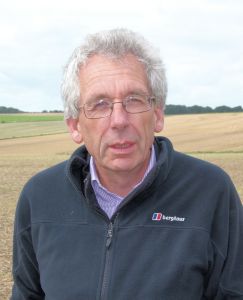
Three key factors contribute towards soil resilience – pH, SOM and drainage, says Andrew Richards.
To address this desire for insight, researchers from Agrii worked alongside the UK Centre for Ecology and Hydrology (UKCEH) and Rothamsted Research to contribute towards the Achieving Sustainable Agricultural Systems (ASSIST) programme.
Part of this £12M research project was to investigate the carbon:clay index (Prout et al 2021) to determine whether it could be used as a valid indicator of soil health. The index is considered to be more useful than measuring SOM alone because it accounts for the impact of texture – the higher the clay content of soil, the greater the level of organic matter required for it to be resilient.
It also acknowledges the binding capacity of clay particles, which mean SOM takes longer to build and degrade in higher clay soils.
“The work analysed around 400 field samples from across England, supplemented by information on previous inputs, cultivations and yields. Encouragingly, a lot of the soils sampled were in a good state,” says Andrew.
“We’re confident that the organic carbon:clay index offers considerable potential for a simple, universal measure of soil condition, while providing insight into what’s required for true resilience.”
Further work is now taking place to fine tune the analysis, particularly for chalk soils which have so far proven difficult to measure. According to Andrew, ground chalk can inadvertently be classified as clay, silt or sand depending on the lab, while free carbonates can lead to an over-estimation of carbon levels.

The binding capacity of clay particles mean SOM takes longer to build and degrade in higher clay soils.
As for drainage, he cites the 360 excavator as the most important tool for a farm with heavy soils. “Don’t underestimate the impact of drainage and ditching, it’s so important. First investigate the drainage you already have, which could be more extensive than you think. Much of this may date back to the 19th century, but by clearing ditches and replacing drain ends, it can be surprising what improvements can be made with limited capital investment.
“Ultimately, you can’t afford to let soils sit wet. A well-drained soil has improved biology because it spends less time in an anaerobic state. Conversely, poorly drained soil will be more prone to suffer from compaction which reduces yield and encourages soil erosion,” says Andrew.
Although committed to the subject, he admits that neither himself or other soil health experts have the entire picture. “There’s so much going on in soil that we don’t understand, it’s a complex ecosystem. What we do know is we have a duty to look after it in a more naturally sympathetic manner to help maintain the resource for future generations.”
Following years of soil health neglect, it’s understood this aim won’t be achieved overnight and that it’ll take many years to build SOM back up, particularly in high clay soils. However, farmers have the option to devise a map for improvement using Agrii’s R&D-based service – the Soil Resilience Strategy (SRS).
The service applies work undertaken by the ASSIST project and uses physical, chemical and biological soil assessments along with scientific interpretation. This is then used to develop strategies to support growers in achieving sustainable objectives.
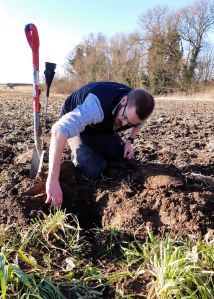
Tom Kirby says using the Soil Resilience Service helps to focus sampling efforts while building a picture of eligible land, including the most profitable areas of the farm.
Agrii agronomist Tom Kirby has been helping his customers to navigate its SRS. “From day one, we realised that any such service had to be focused on practical outcomes, which is a big part of the SRS. It’s also adaptable to each individual grower, their objectives and management practices, which ensures it’s relevant,” he says.
The SRS combines a range of lab-based and in-field assessments to identify the current soil status across different fields. These assessments range from soil testing protocols, including the carbon:clay index, to gleaning as much knowledge as possible from those involved with the farm’s management.
This is supported by conducting a farm system and asset review, and analysing satellite imagery from Google Earth to inform the sampling approach.
“Having an educated picture of what’s happened in the past, either through farm records or first-person accounts, is really important in steering what we do in the future. It works hand-in-hand with the information we gain from scientific evaluation.” says Tom.
“Without this approach, there’s a risk of investigating a field area which will continually underperform due to historic reasons. Additionally, this type of research allows for the identification and refinement of the sampling strategy, making the most of the SRS.”
Using the service should mean growers are better informed when it comes to focusing their sampling efforts and can begin to produce a picture of eligible land, including the most profitable areas of the farm. Tom believes this is important to ensure a balance between profitable food production, soil resilience, environmental protection and the chance to increase biodiversity.
Following investigation and analysis, a report is produced that interprets the results and provides an action plan. It’s hoped through implementing the SRS report recommendations and improving soil health monitoring, farmers will be supported in making the most of the Sustainable Farming Incentive (SFI).
Tom says that in terms of optimising natural inputs such as soil, he’s already noted trends in what growers are hoping to achieve using the SRS. “A common scenario is a wish to improve the management of soils with high silt content, which have a tendency to cap due to silt mobilisation from cultivation.
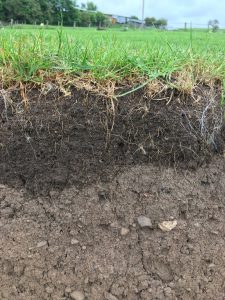
According to Tom Kirby, interest in carbon auditing is increasing, in readiness for future opportunities.
“For this, we’d conduct Visual Evaluation of Soil Structure (VESS) assessments paired with localised penetrometer readings to prescribe subsoiling recommendations field-by-field. This has the potential to be a quick win when it comes to guiding future tillage decisions, reducing overall cultivation, diesel consumption and man hours.”
According to Tom, growers are also becoming increasingly interested in carbon auditing in readiness for future opportunities. “Electrical conductivity (EC) testing measures the soil’s ability to conduct an electric current and identifies differences in texture. This allows for refined sampling zones to be established and is one means of understanding overall soil performance.
“Sampling these zones along with our stratified carbon sampling service will support the realisation of carbon capture on farm. This is key moving forward because it essentially allows us to ‘agronomise carbon’ – adapting management practices to maximise carbon capture on unperforming fields ready for future markets,” concludes Tom.
Measuring soil organic matter
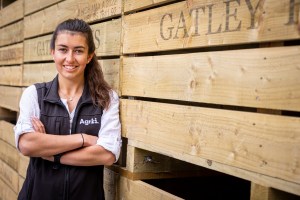
The real action to be taken from measuring SOM is replacing what’s been removed and making practical steps towards improvement, says Amy Watkins.
Without organic matter, soil simply can’t thrive. It plays a multi-faceted role by enhancing the physical, chemical and biological properties of soil. Practically speaking, this means benefits such as enhanced aggregation, improved water holding capacity, optimised nutrient cycling and the provision of food for living organisms in the soil.
Due to its nature, having been living or once-living material, SOM is highly variable – the average amount in UK agricultural soils ranges between 1 and 7%. Agrii’s sustainability manager Amy Watkins believes that although many soils would benefit from an increase in SOM, the first step towards improvement is always measurement.
“SOM addresses all of the basics of soil management, therefore having a clear understanding through a baseline measurement is vital. It’s an old adage – you can’t manage what you haven’t measured,” she says.
Amy believes a key aspect in making the process simple for growers is combining the task with obtaining other field measurements, such as pH testing during the spring or autumn. But because SOM levels won’t change overnight, frequency of sampling is around once every three to five years.
“There’s no quick fix, building SOM levels is a long-term commitment. The easiest way to begin is to integrate SOM testing into standard measurement times, when growers are already in that mindset.”
In terms of testing on farm, samples should be taken at depth, ideally 30cm, using a soil auger. If samples can’t be taken across the whole farm, selecting areas of a similar soil type which are managed alike will be most effective, she advises.
Once samples have been collected, various analysis options are available – the main two being Loss on Ignition (LOI) and Dumas. Dumas is most commonly used and is believed to provide a more rounded approach for assessing soil health, says Amy. “The most important factor is to be consistent with both the labs used and the method of assessment.”
Importantly, SOM is mostly made up of carbon – representing one of the largest carbon stocks on Earth. By increasing SOM by just 0.1%, an additional 8.9 tonnes of carbon is sequestered per hectare, per year. In contrast, physically disturbing soil can lead to a loss of carbon into the surrounding environment as CO2.
Typically, the amount of soil organic carbon (SOC) is about 58% of the SOM matter percentage. So if a soil has 6% SOM, the SOC would be around 3.5%. Amy says that although much remains unknown in terms of the Soil Carbon Code, having a basic understanding of carbon levels in the soil through SOM measurements is a no-brainer.
“There’s a lot of interest growing in monitoring soil carbon stocks to enable the selling of carbon credits. The Sustainable Soils Alliance is leading the development of a framework to support this and recently published a report outlining minimum requirements for UK soil carbon markets,” she says.
“However, the real action to be taken from measuring SOM is replacing what you remove and taking practical steps towards improvement. Whether that’s applying organic manures, incorporating crop residues or adding cover crops into the rotation.”
According to Amy, a lot of time has been spent discussing nitrogen, but not enough focus has been given to carbon and the importance of topping up soil reserves. “If you refer to C:N ratios, you require a careful balance. If the soil’s lacking carbon, the lower the ratio will be. This means organic matter decomposes very quickly and the soil health is off kilter.”
Sustainable solutions
With input prices still high but grain and oilseed prices struggling to maintain the level reached in 2022, there’s little doubt that the stakes are rising in 2023. That means making decisions on the farm which maximise profitability have never been more important.
In this new series, CPM has teamed up with Agrii’s Green Horizons initiative to explore ways in which farm-focused research is helping to raise both economic and environmental sustainability.
Maximising soil health is one part of this initiative’s practical programme of action, which also includes better informed variety choice, charting paths to net zero and evaluating crop protection alternatives as well as all-round farm efficiency improvement.
Up-to-date information on all these areas is available here.
This article was taken from the latest issue of CPM. For more articles like this, subscribe here.
Sign up for Crop Production Magazine’s FREE e-newsletter here.

